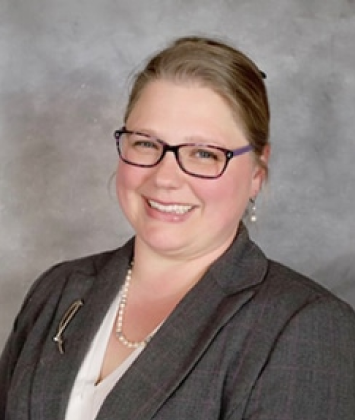In the past few decades, the brands associated with celebrities, social media influencers, athletes, musicians, and other power players in entertainment services have become more valuable than ever before. Entertainers are expanding into product endorsements and business enterprises using their name, brand, and reputation to promote products and services. At the same time, these superstars in the entertainment industry risk being imitated by businesses hoping to profit from using a mark, their likeness, or slogan associated with a celebrity. Many famous people, such as Elvis, Madonna, Tim Tebow, and Kylie Jenner have realized the value and importance of a registered entertainment trademark. Some entertainment industry trademarks protect the owners’ likeness, a catchphrase, a signature move, or an entire product line. But simply being a celebrity does not guarantee your trademark application will be granted.
Why an Entertainment Services Trademark is So Valuable
For better or for worse, our current society is drawn to famous people, “reality television” stars, film actors, professional athletes, and even social influencers who seem to have no identifiable talents beyond being attractive. The savviest of celebrities have parlayed their fame into smart business opportunities where they can sell just about anything using their name, face, or reputation. The wisest business people understand that a registered trademark in the entertainment services category can help protect their reputation and limit others from using their unique brand. One of the most lucrative examples is reality star Kylie Jenner whose net worth is estimated at $1 billion. She has
successfully applied for registered trademarks to protect her extensive product lines including cosmetics, clothing, and fitness tips. On the other hand, sometimes selling your trademark rights can be a wise financial decision. In 1992, sports announcer Michael Buffer obtained a registered entertainment trademark for his signature phrase, “Let’s Get Ready to Rumble!” and later sold the rights to that introduction for $400 million.
Celebrities Don’t Always Get What They Demand
When it comes to intellectual property, even celebrities need to comply with the rules and regulations established by the US Patent & Trademark Office (
USPTO) to receive an entertainment trademark. In general, a registered trademark must be:
- Inherently distinctive, unique, fanciful, and even arbitrary to avoid looking or sounding like another brand,
- More than a simple descriptive or generic explanation of a product,
- An uncommon or unusual name for the product or service, and
- Registered in a specific class of product or service; there are no all-encompassing marks.
In 2012, Jay-Z and Beyoncé tried to apply for a trademark to protect their daughter’s name, “Blue Ivy Carter” because they expect her to be a cultural icon. The application was denied for two reasons. First, they did not provide any proof that the baby’s name was being used as a mark in commerce, and second, a wedding planner had registered an entertainment trademark for her business name, “Blue Ivy” in 2009. The USPTO specifically allowed the party planner to continue using that mark despite the musicians’ attempts to claim it as their intellectual property.
Knowing the Trademark Class for Entertainment Trademarks and How to Obtain Trademark Protection
The USPTO has established 45 classes of products and services that qualify for trademark protection. The trademark class for entertainment services is usually
Class 41: Education, Training, Sports, and Entertainment. This class specifically includes products and services intended to entertain and amuse people or provide recreational opportunities. Your entertainment trademark application must also include a specimen of your proposed mark, name, logo, or brand. This can be difficult in the entertainment industry because not every mark can be placed on a physical product in the marketplace. If you want to register a service, your specimen mark could be scanned versions of advertising materials, business cards or stationary, or a webpage that links the service to the source or brand. Also, an audio file from a radio or television ad may be appropriate if it uses your mark and explains the related product or services. The USPTO will reject a specimen mark that doesn’t indicate the service it covers. Other unacceptable samples for a Class 41 trademark include:
- News articles or press releases,
- Packing orders, invoices, and sales receipts, and
- Business cards or letterhead that only show the proposed mark without explanation of the service provided.
The Entertainment Trademark Application Process
Before you spend too much time and money developing your mark, it’s important to run a
trademark search to determine if your proposed trademark, or something substantially similar to your idea, is already protected. It’s critical to complete a comprehensive search before filing your application to ensure your proposed trademark is available. Your application will be rejected if your specimen looks or even sounds too similar to another product or service in the same classification. Once you are certain your proposed mark is unique, you must complete the required form application and provide the requested information to the Trademark Office. If the trademark reviewing attorney has any questions about your application, you will receive an
Office Action requesting more information, legal analysis, or further explanation. An experienced trademark attorney can be a valuable ally throughout the application process and beyond.
Our Team of Skilled Trademark Lawyers Understand Entertainment Services Trademarks
When your personal identity, celebrity status, social reputation, and future earnings are at stake, you need to protect your unique brand with an entertainment trademark. The experienced trademark attorneys at the
Trademark Lawyer Firm, PLLC have successfully handled more than 6,000 trademark applications nationwide. We can guide you through a trademark search, complete and file your application, respond to Office Actions, and explain how to protect your future trademark rights. We are
located in Ann Arbor, Michigan but we proudly serve the entertainment industry nationwide as a top-rated resource for entertainment trademark services. To schedule a free 15-minute case consultation, give us a call at
888-504-0336 or
fill out our simple online form today.




